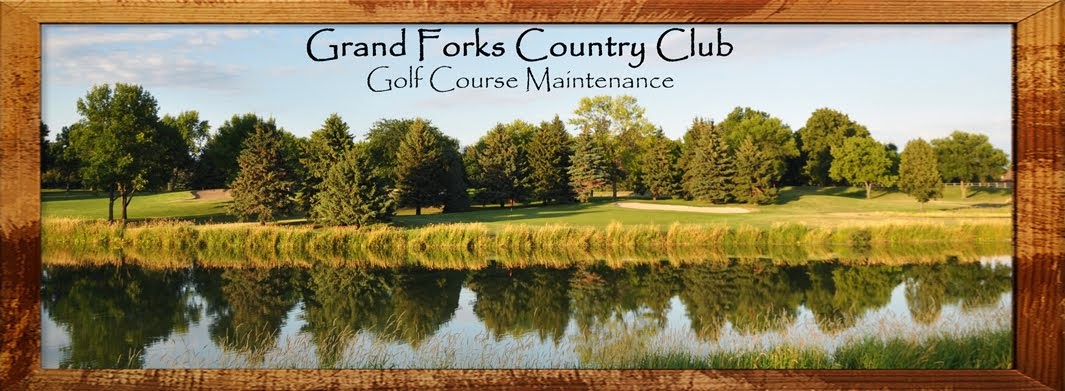Last fall we threw together a quick nursery area in the corner of the property behind 13 tee. There were already a few extra irrigation heads over there, so it was a logical starting place (I'm fairly sure there used to be a turf nursery there a number of years ago actually.) We mowed down some of the rough and overseeded with some bluegrass in order to form a stand of turf for fairway sod, and then in the middle of it we piled up some old aeration cores from the greens, leveled them off, and seeded some bentgrass into it. We didn't put a whole lot of effort into it, but come this spring it was barely established enough that we could harvest whatever was in decent shape to finish the new red tee boxes on 1 and 10.
However, I made the decision this summer to expand on what we had. I have realized that there will rarely ever be such a thing as "perfect" winter in North Dakota that will allow all of our turf on the course that is infested with Poa Annua to survive. The collar damage we have sustained the last 2 springs is evidence of that. It only makes sense to have plenty of sod on hand to fix as much damage as possible in the spring.
We rebuilt our nursery this week, and in doing so doubled it's size from about 1,500 sq. ft. to over 3,000 sq. ft. (next year we will rebuild even bigger!) We just finished grading it out and seeding it today to a newer variety of bentgrass called Alpha (the same kind we used on our new tees this spring.) This new Alpha bentgrass has shown that to be a very tight and aggressive bentgrass that should be able to outcompete the Poa Annua on the greens and collars much better than the 50 year old Penncross bentgrass that is out there now.
 |
| Tilling up the remainder of the old bentgrass nursery |
 |
| After tilling, we added another 20 tons of sand to the area in order to enlarge it to 3,000 square feet. |
We are going to push the nursery pretty hard the remainder of this summer and fall in order to get the turf established enough that it will be able to be harvested first thing next spring. All of the areas where the collars continue to die over the winter (most likely around the bottom edges of the greens where ice accumulates) we will immediately sod out first thing in the spring and get it over with. The benefit of this will be two-fold. For starters, we will not have to look at dead turf all spring while we try to reseed the areas and wait for it to recover. Secondly, and more importantly, we will be replacing the heavy Poa Annua infested areas with a stand of pure bentgrass. This means that instead of simply recovering from the problem, we will be fixing the problem! As was evidenced last winter, the bentgrass can actually survive the conditions of a winter here, the Poa Annua cannot and will always continue to die. We sod the dead collars out once with bentgrass and they should never die in the spring again.....

.jpg)















